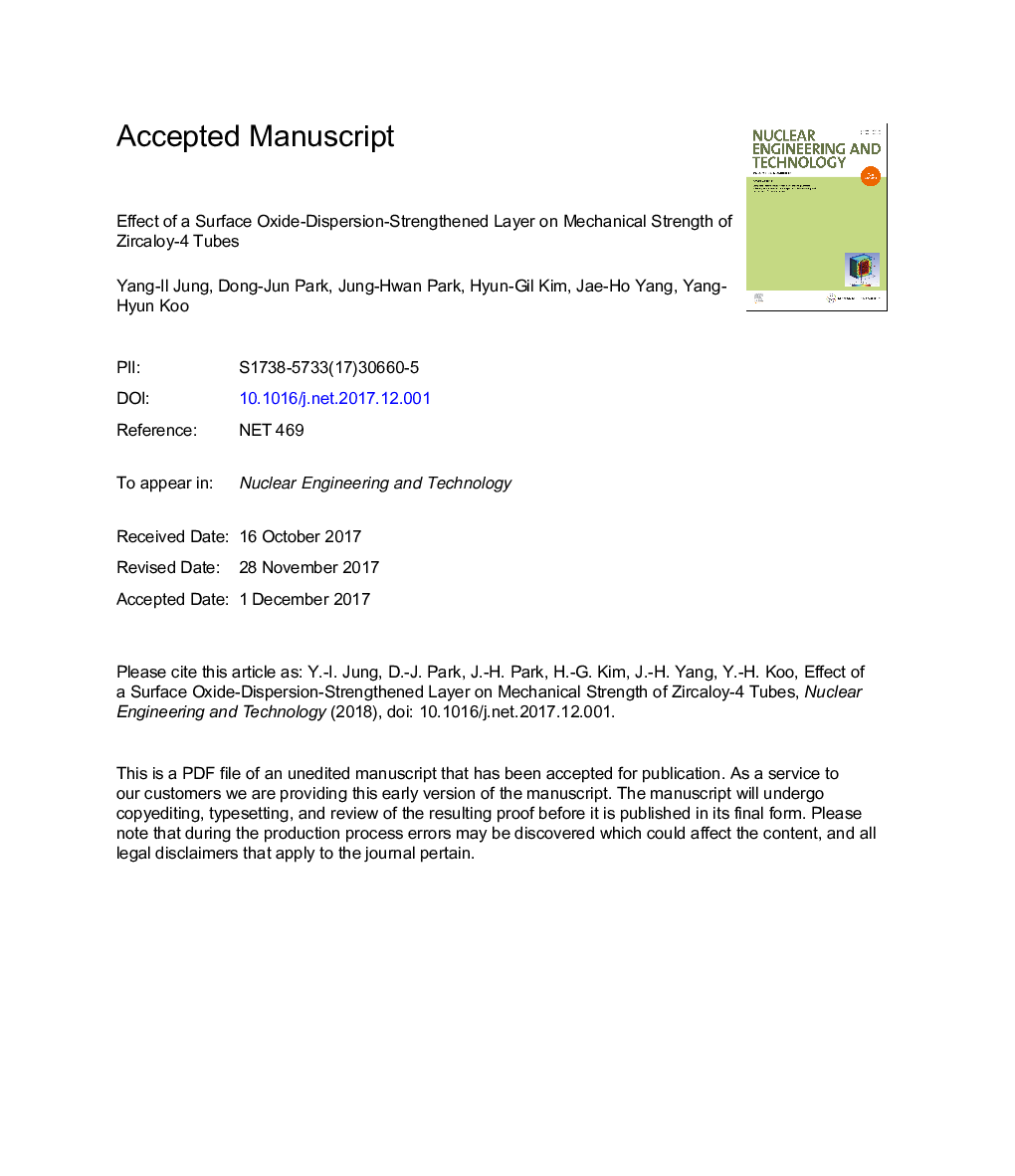| Article ID | Journal | Published Year | Pages | File Type |
|---|---|---|---|---|
| 8083816 | Nuclear Engineering and Technology | 2018 | 20 Pages |
Abstract
An oxide-dispersion-strengthened (ODS) layer was formed on Zircaloy-4 tubes by a laser beam scanning process to increase mechanical strength. Laser beam was used to scan the yttrium oxide (Y2O3)-coated Zircaloy-4 tube to induce the penetration of Y2O3 particles into Zircaloy-4. Laser surface treatment resulted in the formation of an ODS layer as well as microstructural phase transformation at the surface of the tube. The mechanical strength of Zircaloy-4 increased with the formation of the ODS layer. The ring-tensile strength of Zircaloy-4 increased from 790 to 870 MPa at room temperature, from 500 to 575 MPa at 380°C, and from 385 to 470 MPa at 500°C. Strengthening became more effective as the test temperature increased. It was noted that brittle fracture occurred at room temperature, which was not observed at elevated temperatures. Resistance to dynamic high-temperature bursting improved. The burst temperature increased from 760 to 830°C at a heating rate of 5°C/s and internal pressure of 8.3 MPa. The burst opening was also smaller than those in fresh Zircaloy-4 tubes. This method is expected to enhance the safety of Zr fuel cladding tubes owing to the improvement of their mechanical properties.
Related Topics
Physical Sciences and Engineering
Energy
Nuclear Energy and Engineering
Authors
Yang-Il Jung, Dong-Jun Park, Jung-Hwan Park, Hyun-Gil Kim, Jae-Ho Yang, Yang-Hyun Koo,
